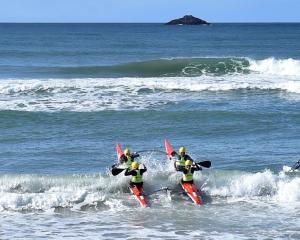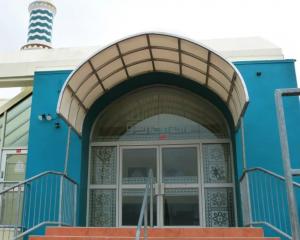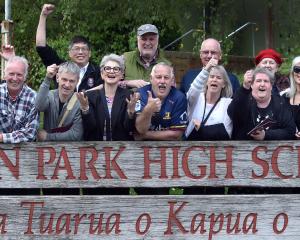South Dunedin Satay House owner Hai Ung (42) said he fled the genocide of the Khmer Rouge when he was 9 years old.
He and his father, three older brothers and sister and brother-in-law walked barefoot to Thailand in 1979. His mother was in poor health and died in Cambodia.
Cambodians were dying from dehydration and starvation, he said.
''I was skinny as a stick. If we didn't get out, we would have died.''
When they reached Thailand, the family were put in a cramped refugee camp for six months until the ''outside world'' heard of the genocide and started accepting refugees, he said.
The family applied to go to United States, Germany and France but failed, he said.
They had heard entry to New Zealand was ''easy'' but the climate was too cold for Cambodians.
His brother-in-law said, ''If people live there, then we can live there,'' and the family came to New Zealand.
He remembered being happy on landing in Auckland and moving to the Mangere Refugee Resettlement Centre.
Refugees lived at the centre and prepared for life in New Zealand by learning English and how to operate ovens, fridges and washing machines and how to make a bed, he said.
In Cambodia, the family had no appliances and slept on a bamboo mat on the floor.
The family struggled to acclimatise to New Zealand cuisine, he said.
''We had never had bread, milk, cheese and Weet-Bix. We didn't know how to eat it.''
It took a long time to gain weight, he said.
After five months at the centre, the family moved to Dunedin. It was chosen because his sister and brother-in-law were sponsored by St Patrick's Church and the rest of the family were sponsored by Sacred Heart Church.
At George Street Normal School, the rice he took for lunch attracted the attention of the sandwich-eating children, but school was fun and he made many friends.
''We had a hard life in Cambodia. It was great to get out. I love it here.''
He had cousins who were refugees and moved to Germany and the United States. He had holidayed in the United States and Europe and preferred Dunedin, he said.
He had owned South Dunedin Satay House for nearly 20 years and married twice and had four children. When he visited the refugee centre in Auckland it looked the same as in 1979, he said.
Immigration Minister Michael Woodhouse said last month the Government had earmarked $5.5 million of funding over the next four years to rebuild the centre.
Many of the buildings were beyond repair and needed replacing, he said.
The centre could accommodate up to 160 people.
''The new facility will be designed to accommodate up to 192 beds, and will include provision to accommodate up to 300 individuals in the event of a mass arrival,'' he saidThe Government was contracting the private sector to build the facilities and would lease the buildings back.
He hoped there would be new and upgraded buildings worth about $15 million at the centre by the end of 2014.
New Zealand has an annual quota of 750 refugees and all refugees spend the first six weeks in New Zealand at the centre.












